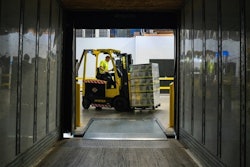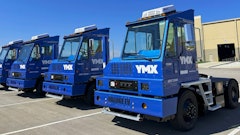
Maintenance costs account for up to 30% of operational life cycle costs for a number of air, land and sea fleet. These costs can be reduced by adoption of a condition-based monitoring (CBM) system, which proposes fleet maintenance based on real-time performance metrics that are significantly more efficient than maintenance schedules based on usage or fixed time intervals.
At the center of CBM technology for fleet management is telematics. This smart fleet management solution, with a predicted market value of $98.65 billion by 2027, provides deep insights into machine operation by providing full functionality status in real time, providing windows for optimizing maintenance strategies. Telematics gather information from GPS sensors, engine sensors and on-board engine diagnostics.
Fleet telematics for condition-based monitoring
Use of telematics systems on the fleet significantly improves CBM of an asset. The telematic system collects diverse data on operational parameters of an asset in a fleet. The telematics system relies on sensors that collect, record and transmit real-time data. Collected data is displayed on onboard display (OBD) systems. Data collected provides real-time insights on asset functionality. A CBM system collects information such as engine RPM, lubrication properties and efficiency, operational speeds and fuel levels.
Collected data is then sent to centralized systems (cloud computing based or interconnected wide area networks), which interpret and analyze the data. Information extracted is utilized to dictate maintenance approaches and improve fleet efficiency. A CBM system may propose an oil change, even before recommended mileage is achieved, especially when lubrication properties of engine oil reduce.
Incorporation of CBM systems for fleet management continues to gain popularity across the world. A steady growth rate of 20% is expected until 2026 as companies continue to customize CBM telematics systems for air, sea and land fleet management systems.
Real-time asset tracking
Fleet management systems go beyond monitoring and maintaining an asset in a fleet. Advanced CBM systems capture real-time locations of an asset using GPS technology.
Real-time fleet locations are critical for efficient utilization of fleet. Analyzed data is used to track the location of the transit fleet, provide routing information and dictate allocation of cargo based on proximity to warehousing facilities.
Location data acquired through asset tracking forms a basis for developing elaborate communication systems and networks to be utilized for seamless connectivity between equipment operators, fleet managers and company clients.
Monitoring of driving/operating patterns
An effective CBM system for fleet management should be able to monitor operating patterns as triggered by the operators and drivers. Human-triggered events such as braking, acceleration and steering have significant impacts on the safety of the operator, cargo and an asset. Factors such as non-uniform acceleration results in reduced fuel efficiency, while instances such as sudden braking can have detrimental effects on ferried cargo.
To efficiently capture these events, a CBM system is incorporated with sensors that collect and transmit driving and operational behaviors. Such systems can indicate safety patterns of fleet, driver fatigue and their impacts on fleet efficiency.
Modern fleet management companies are incorporating semi-autonomous assets on their fleet. Such developments have prompted use of additional sensors and safety equipment on board the assets. They collect and relay internal and external asset conditions, alerting operators and drivers as and when changes are experienced.
Data collected by the CBM system on driving and operation patterns advises fleet managers on training gaps for drivers and operators. CBM systems have been instrumental in adoption of equipment like speed limiters for heavy duty fleet. CBM system data can equally be utilized for trip scheduling, driver allocation and roster rollout and implementation.
Real-time data analysis for advanced fleet systems
Advanced systems are required for the management of naval and air fleet. CBM systems for managing such fleets incorporate additional monitoring facilities. For instance, planes are fitted with flight data recorders, which capture real-time flight events. High-speed trains on the other hand rely on on-train monitoring recorders. These advanced systems detect real-time anomalies on diverse components, process the data collected in real time. Analyzed data can then be pushed through predictive data models to predict future failures and suggest probable proactive maintenance schedules. This represents the core of predictive and prescriptive maintenance.
Conclusion
CBM technology for fleet management is a promising field for players in the logistics industry. With advances in Internet of Things (IoT) and cloud computing, CBM is poised to revolutionize fleet management strategies adopted by different companies.
As robust CBM technologies for fleet management are being rolled out, reliance on cloud-based maintenance software cannot be ruled out. These two systems work hand in hand to reduce operational costs, improve fleet efficiency and reduce maintenance workloads.


















